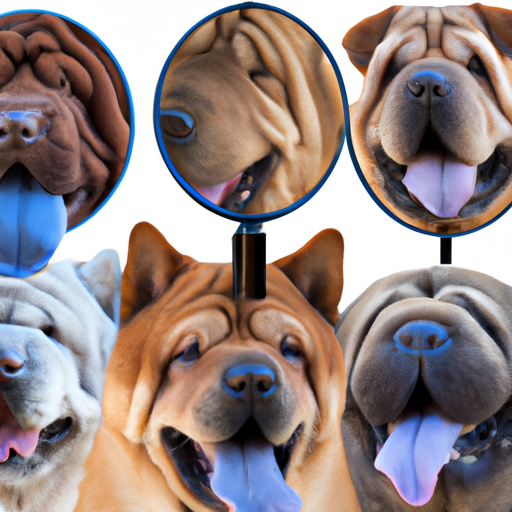Hello, dear caregiver! You’ve probably observed a variety of dogs and their unique features. One such feature that might have caught your attention is a dog’s tongue color. Yes, you read it right. A dog’s tongue can be more than just the typical pink you’re used to seeing. Some dogs have blue tongues! This article will provide you with in-depth knowledge on the fascinating topic of dogs with blue tongues.
The Mystery of the Blue Tongue
You must be wondering why some dogs have blue tongues. The blue color is due to a higher amount of pigmentation called melanin. This is similar to the way skin color varies in humans. Melanin can cause the tongue to appear blue, black, or purplish.
Melanin pigmentation in a dog’s tongue is not an indicator of a health problem. It is a genetic attribute that is more common in some breeds than others. It’s important to remember that if your dog doesn’t have a blue tongue, it doesn’t mean they are unhealthy or lacking in any way.
Dog Breeds with Blue Tongues
Here are the dog breeds that are known for having blue tongues:
-
Chow Chow: These fluffy dogs are native to China and are one of the few breeds that have a fully blue-black tongue. This is their most distinctive feature, along with their lion-like mane and deep-set eyes.
-
Chinese Shar-Pei: Another breed from China, Shar-Pei dogs, are also famous for their blue-black tongues. This, along with their wrinkled skin, makes them unique.
-
Thai Ridgeback: This breed is less commonly known, but these dogs also possess a blue-black tongue. They are also recognizable by the line of hair running along their back in the opposite direction, hence the name ‘Ridgeback’.
Below table summarizes the key features of these breeds:
| Breed | Origin | Key Features |
|---|---|---|
| Chow Chow | China | Blue-black tongue, lion-like mane |
| Chinese Shar-Pei | China | Blue-black tongue, wrinkled skin |
| Thai Ridgeback | Thailand | Blue-black tongue, ridge of hair on back |
Blue Tongue Spotting
Not all dogs of these breeds will have a completely blue tongue. Some might have a pink tongue with blue spots, or a mostly blue tongue with some areas of pink. These variations are all normal and part of what makes each dog unique.
Here are some ways to spot blue tongues in dogs:
- Check under good lighting: This will help you see the true color of the tongue.
- Look for a clean tongue: Make sure the tongue is clean and free from any food or debris that could be covering the blue color.
- Check when the dog is relaxed: The tongue might appear more blue when the dog is relaxed and the tongue is fully extended.
Health Concerns Related to Tongue Color
While a blue tongue is generally a genetic trait and not cause for concern, sudden changes in your dog’s tongue color could indicate a health issue. A healthy dog’s tongue should be moist and pink. A tongue that is pale, white, blue, or yellow could indicate a health problem, such as anemia, dental issues, or circulatory problems.
If you notice any sudden changes in your dog’s tongue color, it is recommended to consult with a vet immediately.
Frequently Asked Questions
1. Why do only some dogs have blue tongues?
The blue color of a dog’s tongue is due to a higher concentration of melanin. This is a genetic trait that is more common in some breeds than others.
2. Are there health issues associated with a blue tongue in dogs?
A blue tongue in dogs is generally a genetic trait and not cause for concern. However, sudden changes in your dog’s tongue color could indicate a health issue.
3. Can a dog have a partially blue tongue?
Yes, some dogs might have a pink tongue with blue spots, or a mostly blue tongue with some areas of pink. These variations are all normal.
4. What should I do if my dog’s tongue changes color?
If you notice any sudden changes in your dog’s tongue color, it is recommended to consult with a vet immediately.
By now, you should have a good understanding of why some dogs have blue tongues. Remember, the color of a dog’s tongue is just one of the many fascinating aspects of their biology and genetics. So, whether your canine companion has a pink tongue or a blue one, each is unique and special in their own way.



